Creating a Maintenance Schedule for Long-Term Rental Properties: A Comprehensive Guide
Introduction to Maintenance Schedules for Long-Term Rental Properties
Owning and managing long-term rental properties comes with the responsibility of ensuring that both the property and its systems are well-maintained. An effective maintenance schedule is essential for landlords, property managers, and real estate investors to minimize expensive repairs, improve tenant satisfaction, and enhance the overall value of the property. A well-organized maintenance routine not only ensures that the property remains in good condition but also helps in adhering to local laws and regulations regarding tenant rights and safety.
A maintenance schedule is essentially a structured plan that outlines when specific tasks need to be performed and who is responsible for them. This guide will provide a detailed framework for creating an effective maintenance schedule for your long-term rental properties, focusing on both preventive and reactive maintenance practices.
Why a Maintenance Schedule is Essential
Protects Your Investment
Regular maintenance can extend the lifespan of your property’s systems and structures. From the HVAC system to the roof, each component of the property requires periodic attention. Regular checks can help prevent small issues from snowballing into large, expensive problems.
For instance, neglecting to clean the HVAC system might cause it to break down during the summer when tenants need it most, leading to costly repairs and tenant dissatisfaction. A maintenance schedule helps avoid such unexpected expenses by proactively addressing issues before they become severe.
Ensures Tenant Satisfaction
When tenants see that you are committed to maintaining the property, they are more likely to stay longer and treat the property with care. A timely response to maintenance requests and routine inspections can contribute to higher tenant satisfaction. Happy tenants are less likely to move out, reducing your turnover rate and vacancy periods.
Compliance with Laws and Regulations
Certain aspects of property maintenance, such as ensuring the property is safe and habitable, are required by law. Failing to address these requirements can result in fines, legal disputes, or even losing tenants. A clear maintenance schedule can help you stay compliant with local, state, and federal regulations, ensuring you avoid any costly violations.
Key Components of a Maintenance Schedule
Preventive Maintenance
Preventive maintenance focuses on proactive measures designed to keep your property’s systems and structures in good condition. This includes regular inspections, cleaning, and servicing of key areas to prevent breakdowns or major issues.
Examples of preventive maintenance tasks include:
- HVAC system checks: Replace filters every 3 to 6 months and have the system inspected annually to prevent breakdowns.
- Plumbing inspections: Check for leaks, blockages, or potential water damage.
- Roof inspections: Inspect for damage or wear that could lead to leaks, particularly after storms or extreme weather.
- Electrical system checks: Test outlets, circuit breakers, and lighting systems to ensure everything is functioning properly.
- Pest control: Schedule quarterly treatments or inspections to prevent infestations.
Having a preventive maintenance schedule ensures that you catch issues early before they require costly repairs or disrupt the tenant’s living experience.
Reactive Maintenance
Reactive maintenance, also known as “break-fix” maintenance, occurs when something breaks or fails unexpectedly, requiring an immediate fix. Though it’s impossible to predict all reactive maintenance, being prepared for emergencies and having a clear procedure for addressing these situations is important.
Examples of reactive maintenance tasks include:
- Leaky pipes or faucets: Tenants might report leaks, which need prompt attention to avoid water damage.
- Appliance breakdowns: Issues with dishwashers, ovens, or washing machines should be addressed as soon as they arise.
- Electrical issues: If tenants experience power outages or faulty wiring, immediate repairs are necessary to maintain safety.
Seasonal Maintenance Tasks
Certain maintenance tasks should be scheduled based on the season to account for the changing weather conditions that can affect a property. This could mean cleaning gutters in the fall or servicing the heating system in the winter. These seasonal checks are critical to ensure that systems perform optimally during their peak usage times.
For example:
- Winter: Prepare heating systems, check insulation, and ensure the property is winterized (especially in colder climates).
- Spring: Inspect roofs and gutters after winter weather, and schedule lawn care or landscaping services.
- Summer: Test air conditioning units, inspect the pool (if applicable), and check irrigation systems.
- Fall: Clean gutters, inspect windows and doors for drafts, and prepare for cold weather.
Creating a Maintenance Calendar
Developing an Annual Maintenance Calendar
An annual maintenance calendar is a powerful tool for staying on top of your property’s needs. This calendar will help you organize and schedule both preventive and reactive maintenance tasks throughout the year. A well-organized schedule allows you to plan well in advance and allocate resources as needed.
To create a calendar:
- List all critical systems and tasks: Identify everything that requires regular attention, such as HVAC, plumbing, electrical systems, and appliances.
- Determine the frequency of each task: Some tasks might be annual (e.g., roof inspection), while others need to be done quarterly or even monthly (e.g., pest control).
- Set reminders: Use a digital calendar or property management software to send automated reminders for each scheduled maintenance task.
For example, you could schedule an HVAC check-up every six months, roof inspection annually, and pest control treatments quarterly. These reminders will ensure that you never miss an important task, improving the overall management of the property.
Coordinating with Vendors and Contractors
Some maintenance tasks require specialized knowledge or tools, such as electrical work, plumbing, or HVAC servicing. Establishing relationships with reliable vendors and contractors is essential.
- Research local contractors: Find trusted service providers who specialize in the types of work your properties require. Look for vendors with good reviews, reasonable rates, and reliable services.
- Negotiate contracts: Consider establishing maintenance agreements with contractors for recurring services. This can save money in the long term and help ensure priority service when needed.
- Create a vendor contact list: Maintain a list of trusted contractors for emergency situations, ensuring that you can quickly address urgent issues.
Common Challenges in Creating a Maintenance Schedule
Balancing Preventive and Reactive Maintenance
One of the most common challenges property owners face is finding the right balance between preventive and reactive maintenance. Preventive maintenance saves money in the long run by addressing small issues before they escalate, but reactive maintenance is inevitable. Balancing both aspects effectively requires careful planning and organization.
To overcome this, consider:
- Setting aside a portion of your budget for reactive maintenance each year to cover unexpected costs.
- Prioritizing preventive maintenance during low-occupancy periods to minimize disruptions for tenants.
Managing Multiple Properties
If you manage multiple rental properties, staying on top of maintenance schedules can be overwhelming. Using property management software can help streamline this process by providing reminders, tracking tasks, and managing vendor relationships across all properties.
Budgeting for Maintenance Costs
A major concern for property owners is the cost of maintenance. Preventive maintenance can help reduce overall expenses, but some tasks, especially major repairs or replacements, can still be costly. It’s important to budget for these expenses and set aside a reserve fund for unexpected repairs.
To manage these costs:
- Allocate a fixed percentage of your rental income for maintenance (typically 1-3%).
- Track all maintenance expenses to identify patterns and prepare for future costs.

Get a Free Rental Analysis
Want to know how much your home will rent for? We’ll send you a free rental report!
Implementing Your Maintenance Schedule: Best Practices and Tools
Establishing Clear Communication with Tenants
Effective communication is a cornerstone of a successful maintenance schedule. Tenants must understand their responsibilities and the procedures for reporting issues. In turn, property managers must be responsive to tenant needs and proactive in notifying them about upcoming maintenance tasks.
Tenant Responsibilities in Maintenance
While tenants should not be responsible for major repairs, they do have some maintenance duties to uphold, such as:
- Reporting issues promptly: Tenants should be encouraged to report problems like leaks, faulty appliances, or electrical issues as soon as they arise. Early reporting can prevent further damage and reduce the overall cost of repairs.
- Regular cleaning and care: Tenants should maintain the property in a clean and safe manner, such as ensuring that drains are clear of debris and that appliances are used properly.
- Preventing damage: It’s important for tenants to know what constitutes normal wear and tear versus tenant-caused damage. Clearly communicate this in the lease agreement to avoid confusion.
Property Manager Responsibilities
As a property owner or manager, it is your responsibility to ensure that the property is safe and well-maintained. Some best practices include:
- Routine inspections: Conduct regular inspections to ensure that all systems and areas of the property are functioning properly. Inspections should be done at least once or twice a year, and landlords should schedule these visits in advance to minimize disruptions to tenants.
- Clear procedures for reporting and resolving issues: Set up a transparent process for tenants to submit maintenance requests, whether via an online portal, email, or phone. Provide clear timelines for when they can expect to hear back and how urgent matters will be handled.
- Addressing tenant concerns in a timely manner: Establish a protocol for responding to maintenance issues based on their urgency, from emergency repairs to routine fixes. Maintaining open lines of communication will build trust and improve tenant retention.
Utilizing Technology to Manage Your Maintenance Schedule
Managing multiple properties or dealing with a large volume of tasks can be overwhelming without the right tools. Fortunately, modern technology has made it easier for property owners and managers to streamline maintenance scheduling, track tasks, and communicate with tenants and vendors.
Property Management Software
Using property management software can significantly improve how you manage maintenance schedules and tasks. These platforms typically offer a range of features, including:
- Task tracking: You can create tasks for yourself or contractors, set due dates, and track the progress of maintenance requests.
- Tenant communication: These systems allow tenants to submit maintenance requests directly through an online portal, which can automatically notify you when a request is made.
- Automated reminders: Property management software can automatically remind you of upcoming maintenance tasks, ensuring you never miss a scheduled inspection or repair.
- Vendor management: These tools allow you to maintain a list of reliable contractors and service providers and track their performance, ensuring that you have the best professionals on hand for any maintenance needs.
Some popular property management software options include AppFolio, Buildium, and TenantCloud. Choose the platform that best fits your needs based on the number of properties you manage, the complexity of your maintenance tasks, and your budget.
Maintenance Request Portals
If you manage a smaller portfolio or prefer a simpler approach, creating a dedicated maintenance request portal for your tenants can be an effective way to keep track of requests and ensure quick responses. Many software providers offer tenant-facing portals that allow tenants to submit maintenance requests, upload photos, and describe the problem in detail.
Some benefits of using a request portal include:
- Clear record-keeping: The portal provides a written record of all maintenance requests and responses, which can help in resolving disputes and tracking recurring issues.
- Ease of communication: Tenants can communicate issues directly through the portal, which eliminates the need for phone calls or emails.
- Faster resolution: A streamlined, easy-to-use system can help ensure quicker resolution of maintenance issues, which can improve tenant satisfaction.
Budgeting for Property Maintenance
Setting Aside a Maintenance Reserve Fund
As discussed earlier, maintaining a reserve fund for property maintenance is critical to cover unexpected repairs. Property owners should budget for both routine and emergency maintenance, ensuring that there are enough funds set aside to address urgent repairs or larger issues like roof damage or plumbing problems.
To determine how much to set aside, consider the following:
- Percentage of rental income: A general guideline is to set aside 1-3% of your rental income for maintenance. For example, if you generate $5,000 a month in rental income, setting aside $50 to $150 a month will provide a cushion for maintenance expenses.
- Property age and condition: Older properties often require more frequent repairs, so consider setting aside a larger amount if you own older buildings or properties in poor condition.
- Planned capital expenditures: In addition to regular maintenance, you should plan for future upgrades or replacements, such as replacing appliances or installing new flooring. Set aside a portion of the reserve fund for these larger, infrequent expenses.
Having a dedicated reserve fund allows you to cover maintenance expenses without dipping into other revenue streams or scrambling for funds during an emergency.
Tracking Maintenance Expenses
To properly budget for future maintenance needs, it’s important to track your expenses over time. Keeping detailed records of all maintenance-related costs can help you identify patterns and plan more accurately for future needs. This can be done manually or through property management software.
Some tips for tracking maintenance expenses include:
- Categorize expenses: Break down your maintenance expenses into categories, such as plumbing, electrical, HVAC, landscaping, and emergency repairs. This will give you a clear view of where your money is going.
- Monitor recurring issues: If certain problems keep reoccurring, it might be time to invest in a long-term solution. For example, frequent plumbing issues may signal the need for a pipe replacement or a more thorough inspection.
- Review maintenance costs annually: At the end of each year, review your maintenance budget to ensure you’re staying on track and to make adjustments if necessary.
Handling Emergency Maintenance
Preparing for Emergencies
While preventive maintenance and routine checks can significantly reduce the likelihood of emergencies, it’s important to be prepared for unexpected situations. Emergency maintenance can arise at any time, such as a burst pipe, a fire, or an electrical outage. Having a plan in place ensures that issues are resolved quickly to minimize tenant inconvenience and property damage.
Some emergency maintenance best practices include:
- Create an emergency contact list: Keep a list of reliable contractors and emergency service providers that can respond quickly to urgent situations. This list should include plumbers, electricians, HVAC technicians, and general contractors.
- Communicate with tenants: Make sure tenants are aware of the procedure for reporting emergencies. Provide them with clear instructions on how to contact you after hours and what qualifies as an emergency.
- 24/7 availability: If you are unable to handle emergencies personally, consider partnering with a property management company or third-party service that offers 24/7 emergency maintenance.
Handling Insurance Claims
In cases where emergency maintenance results in significant damage (e.g., a fire or flood), insurance claims may be necessary. It’s crucial to have an understanding of your insurance policy and the process for filing claims.
- Know your coverage: Familiarize yourself with your insurance policy to understand what is covered and what isn’t, especially in the case of major repairs.
- Document the damage: When an emergency occurs, take photos of the damage, gather quotes for repairs, and file the claim as quickly as possible to expedite the process.

Managing Vendor Relationships and Outsourcing Maintenance
Building Relationships with Reliable Contractors
One of the key components of an effective maintenance schedule is ensuring that you have reliable contractors and service providers on hand. Whether you need someone for regular inspections or emergency repairs, having trusted vendors is essential for minimizing downtime and ensuring high-quality work.
Vetting Contractors
Before adding a contractor to your roster, take the time to properly vet them to ensure they meet your standards. Some important steps in this process include:
- Check licenses and insurance: Make sure all contractors hold the necessary licenses for their trade and have adequate insurance coverage. This protects you in case of accidents or damage during the job.
- Look at reviews and references: Read online reviews and ask for references from other property managers or homeowners who have worked with the contractor. This can give you insight into their reliability, quality of work, and professionalism.
- Get multiple bids: For larger projects or repairs, always get multiple bids to ensure you are paying a fair price. This also gives you the opportunity to compare timelines and services offered.
Maintaining Strong Vendor Relationships
Building long-term relationships with contractors can benefit both parties. Vendors who know you well are more likely to prioritize your needs, provide better service, and offer competitive rates.
Some tips for fostering strong relationships with your contractors include:
- Clear communication: Ensure that you communicate your expectations and requirements clearly. Be upfront about deadlines, pricing, and scope of work to avoid misunderstandings.
- Timely payments: Pay your contractors on time to build trust and encourage them to prioritize your projects. Delayed payments can sour relationships and lead to lower service levels.
- Regular check-ins: Even if a project is completed, maintain periodic check-ins with your contractors. This shows that you value their work and helps keep the lines of communication open for future projects.
Outsourcing Maintenance Tasks
Depending on the size of your property portfolio and your available resources, it may be beneficial to outsource the management of your maintenance schedule. Outsourcing can free up your time and ensure that the work is handled by experienced professionals.
When to Consider Outsourcing
Consider outsourcing maintenance tasks if:
- You manage multiple properties: Handling maintenance for numerous units can be overwhelming. Outsourcing can streamline your processes, freeing you to focus on other areas of property management.
- You lack expertise in maintenance: If you’re not well-versed in maintenance tasks, a property management company or maintenance service provider can offer the necessary skills and knowledge.
- You have time constraints: If you lack the time to stay on top of every maintenance task, outsourcing allows you to delegate day-to-day management while you focus on strategic decisions.
Choosing a Property Management Company
If you decide to outsource maintenance, consider partnering with a property management company that offers comprehensive services, including maintenance management. This can be particularly helpful if you own multiple rental properties or prefer a hands-off approach.
When selecting a property management company, keep the following in mind:
- Experience: Choose a company with experience managing rental properties similar to yours. They should be familiar with local building codes, regulations, and the needs of long-term rental properties.
- Comprehensive services: Ensure the company offers a full range of services, from tenant screening and rent collection to maintenance and repair management.
- Transparent pricing: Understand how the company charges for its services and ensure that there are no hidden fees. Choose a company that offers competitive rates and clear service breakdowns.
Legal and Regulatory Considerations for Maintenance
Understanding Local Laws and Regulations
As a property owner or manager, it is critical to stay informed about local laws and regulations governing property maintenance. Failing to comply with these laws can result in fines or legal disputes.
Some common legal considerations include:
- Building codes: Ensure that all maintenance and repair work complies with local building codes. This is especially important for larger repairs or upgrades, such as electrical or plumbing work.
- Health and safety regulations: Ensure that the property remains habitable and safe for tenants. Regularly check that smoke detectors, carbon monoxide detectors, and fire extinguishers are up to code. Address any issues that could pose a health or safety risk.
- Tenant rights: Be aware of tenant rights regarding maintenance. For example, in many areas, landlords are legally required to respond to maintenance requests within a certain timeframe. You must also respect tenants’ rights to privacy and avoid entering their units without proper notice.
Environmental Considerations in Maintenance
As sustainability becomes a larger concern, property owners and managers are increasingly focusing on making maintenance practices more environmentally friendly. There are several ways to incorporate eco-friendly practices into your maintenance schedule:
- Energy-efficient appliances: Replace old, inefficient appliances with energy-efficient models that use less electricity and water. This can reduce utility costs for tenants and lower your property’s carbon footprint.
- Water conservation: Install low-flow faucets, showerheads, and toilets to reduce water usage. Encourage tenants to conserve water by providing clear instructions on water-saving practices.
- Green cleaning products: Use non-toxic, eco-friendly cleaning products to reduce exposure to harmful chemicals and promote healthier living environments for your tenants.
Handling Hazardous Materials
If maintenance tasks involve hazardous materials such as asbestos, lead paint, or mold, you must follow strict guidelines for their removal and disposal. Always hire professionals trained in handling such materials and ensure that any necessary permits are obtained.
Tips for Overcoming Common Maintenance Challenges
Despite having a solid maintenance schedule in place, property managers often face challenges when it comes to managing maintenance tasks. Below are some common pain points and strategies for overcoming them:
Managing Emergency Maintenance
Emergencies can happen at any time, and they can be particularly challenging to manage when you are not prepared. To reduce the impact of emergency maintenance:
- Establish clear emergency procedures: Have a system in place for handling urgent repairs, and ensure tenants know how to contact you or your team in case of an emergency.
- Develop a network of trusted vendors: Maintain a list of contractors who can respond quickly to emergencies. This will help ensure a faster resolution of urgent issues.
Dealing with Vendor Delays
Contractor delays can throw off your maintenance schedule and lead to tenant dissatisfaction. To mitigate delays:
- Vet vendors carefully: Ensure that the contractors you hire are reliable and have a history of meeting deadlines.
- Set clear expectations: When discussing timelines with vendors, set realistic deadlines and ensure they understand the importance of completing the work on time.
- Follow up regularly: Keep track of deadlines and follow up with vendors as necessary to ensure the work is being completed according to schedule.
Keeping Maintenance Costs Under Control
Property maintenance can quickly become expensive if not managed properly. To keep costs under control:
- Invest in preventive maintenance: As discussed earlier, proactive maintenance can prevent costly repairs and extend the life of your property’s systems.
- Shop around for vendors: Compare pricing from different contractors to ensure that you are getting the best deal for the work required.
- Budget carefully: Establish a detailed budget for each property and track your expenses regularly to avoid going over budget.
Final Thoughts
A well-organized and thorough maintenance schedule is essential to the long-term success of rental property management. By implementing a clear schedule, establishing strong communication with tenants, using technology to streamline processes, managing vendor relationships, and adhering to legal regulations, property owners can keep their properties in optimal condition and ensure a positive experience for tenants.
Regular maintenance not only helps preserve the value of your properties but also minimizes emergency repairs, improves tenant satisfaction, and contributes to the overall profitability of your rental business. By following best practices and staying proactive, property managers can effectively manage maintenance schedules and overcome common challenges.
Suggested Relevant Links:
Preventive Maintenance: How Hiring a Manager Can Save You Thousands in Avoidable Repairs
How to Increase Tenant Retention in Palm Beach Gardens
Comprehensive Guide to Efficiently Self-Managing Your Rental Properties
FAQ: Creating a Maintenance Schedule for Long-Term Rental Properties
1. Why is a maintenance schedule important for rental properties?
A maintenance schedule helps ensure that your properties are kept in good condition, reduces the likelihood of costly emergency repairs, and improves tenant satisfaction. It also ensures compliance with local laws and regulations.
2. How often should I conduct maintenance checks on my rental property?
Maintenance checks should be conducted at least once or twice a year. However, for high-traffic areas or older properties, more frequent inspections may be necessary to catch issues early.
3. What tasks should be included in a long-term rental property maintenance schedule?
Common tasks include HVAC system inspections, plumbing checks, electrical system checks, appliance servicing, roof inspections, pest control, landscaping, and seasonal upkeep such as weatherproofing.
4. Can I outsource property maintenance tasks?
Yes, outsourcing maintenance is common for property managers who have multiple units or limited time. A property management company or individual contractors can handle regular and emergency maintenance.
5. How do I find reliable maintenance vendors?
Look for vendors with strong references, licenses, and insurance. Always check reviews and get multiple quotes to ensure quality work at competitive rates.
6. What should I do if I face an emergency repair?
Have a clear procedure in place for emergencies. This includes a list of trusted vendors who can handle urgent repairs and providing tenants with contact information for quick resolution.
7. How can I reduce the costs of property maintenance?
Preventive maintenance is key. By addressing small issues before they escalate, you can save on more significant repair costs. Additionally, consider investing in energy-efficient upgrades and competitive vendor pricing.
8. Are there any legal requirements for maintenance in rental properties?
Yes, property owners must comply with local building codes, health and safety regulations, and tenant rights laws. Regularly inspect your property to ensure compliance and address any issues promptly.
9. What role does technology play in property maintenance?
Technology can streamline maintenance schedules with automated reminders, track maintenance requests, and help manage vendor relationships efficiently. Property management software can be a valuable tool in organizing tasks.
10. What should I do if a tenant requests maintenance?
Respond to tenant requests promptly, within a reasonable timeframe (typically 24-48 hours). Make sure to assess the situation, arrange for repairs, and keep tenants updated on the progress.



